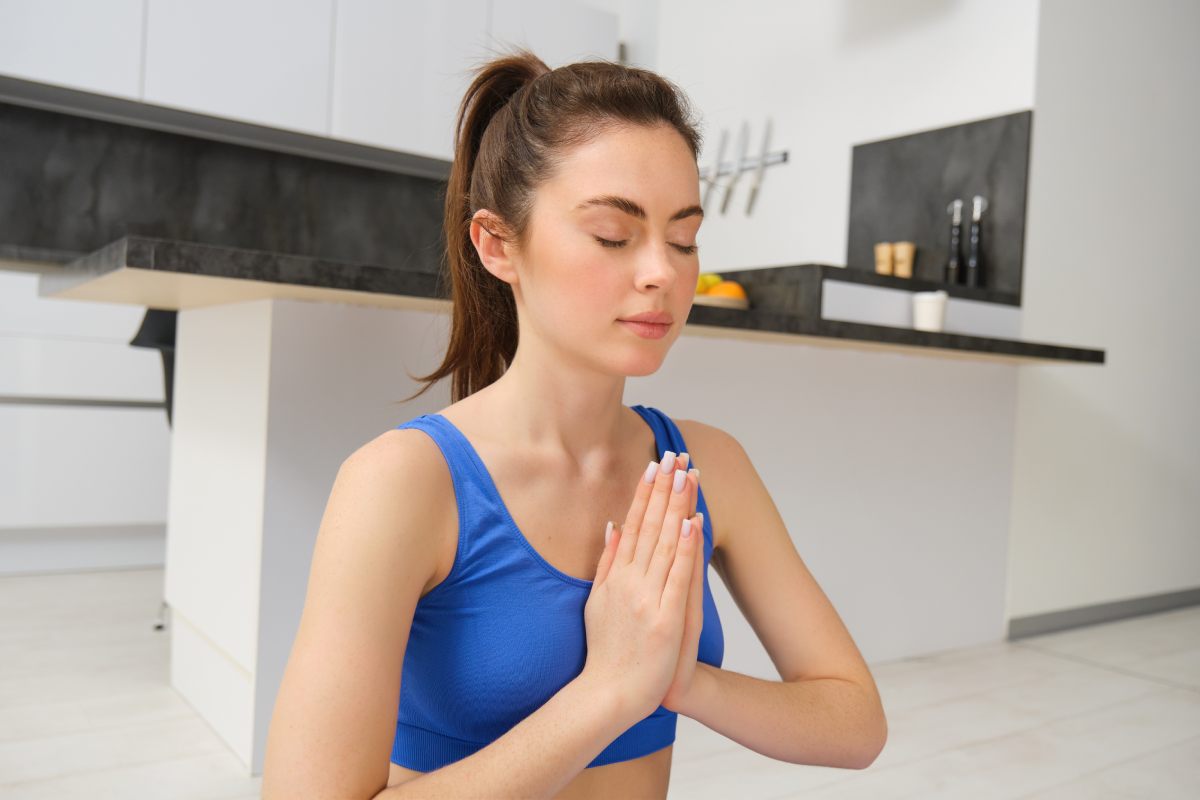One simple yet profoundly beneficial pose that everyone can incorporate into their routine is Pranamasana, also known as Prayer Pose. This article provides an in-depth exploration of Pranamasana, emphasizing how you can practice it to enhance your mindfulness and overall well-being.
What is Pranamasana?
Pranamasana, often called Prayer Pose, is a foundational yoga posture typically used at the beginning or end of a yoga sequence. The Sanskrit word “Pranamasana” comprises two elements:
- Pranam: Meaning “bow” or “salutation”
- Asana: Meaning “pose” or “posture”
Commonly practiced across various yoga styles, Pranamasana symbolizes respect, gratitude, and introspection, forming a vital connection between the mind, body, and spirit.
Why Include Pranamasana in Your Yoga Routine?
Incorporating Pranamasana into your daily yoga practice offers multiple benefits:
Physical Benefits:
- Improves Posture: Regular practice helps align the spine, reducing tension and promoting better overall posture.
- Enhances Balance: Standing still and focusing inwardly builds stability and core strength.
- Calms the Nervous System: Deep, controlled breathing combined with stillness calms and rejuvenates the nervous system.
Emotional and Mental Benefits:
- Encourages Mindfulness: Encourages practitioners to become more present and aware of their inner state.
- Reduces Anxiety: Regular practice can significantly lower stress levels, offering a calming effect.
- Improves Focus: Enhances concentration by teaching practitioners to focus their attention inward.
Pranamasana is especially valuable because it is accessible to practitioners of all skill levels, making it ideal for beginners and seasoned yoga enthusiasts alike.
Step-by-Step Guide to Performing Pranamasana
Here is a detailed step-by-step guide to help you practice Pranamasana properly:
Starting Position:
- Stand upright on your yoga mat with your feet close together.
- Distribute your weight evenly on both feet.
- Keep your spine straight and your arms relaxed at your sides.
Alignment and Execution:
- Bring your palms together gently in front of your chest, touching lightly in a prayer position.
- Align your elbows and wrists parallel to the floor, forming a straight line.
- Relax your shoulders away from your ears, allowing them to soften naturally.
- Keep your chest open and lifted slightly upward to encourage a natural breathing flow.
Breathing Techniques:
- Inhale deeply through your nose, filling your lungs and expanding your chest.
- Exhale slowly through your nose, releasing any tension from your body and mind.
- Maintain slow, rhythmic breathing to calm your mind and enhance focus.
Tips for Maintaining Balance and Correct Posture:
- Keep your gaze soft and focused gently ahead or slightly downward.
- Slightly engage your abdominal muscles to stabilize your core.
- Practice regularly to improve balance gradually.
Common Mistakes and How to Avoid Them:
- Tensing Shoulders: Avoid hunching your shoulders by consciously relaxing them downward.
- Locked Knees: Slightly bend your knees to avoid unnecessary strain.
- Unsteady Breathing: Maintain consistent breathing to maximize relaxation and stability.
Integrating Pranamasana Into Daily Life
Even with a busy lifestyle, Pranamasana can be effortlessly incorporated into your routine:
Practical Ways to Practice Daily:
- Begin your day with Pranamasana to set a positive, mindful intention.
- Incorporate it during short breaks from work or study to refresh your mind.
- End your day by performing Pranamasana as part of a calming bedtime ritual.
Ideal Moments for Practice:
- Morning routines to promote clarity and focus for the day ahead.
- Take short breaks during the workday to relieve stress and maintain productivity.
- Bedtime rituals to help unwind and facilitate restful sleep.
Guided Meditation or Affirmation:
Consider integrating a simple affirmation or meditation during your Pranamasana practice:
- “I am calm, centered, and present in this moment.”
- “I release all tension and embrace peace.”
Combining Pranamasana with Other Yoga Poses
Pranamasana seamlessly integrates into broader yoga sequences, serving as a foundational or concluding pose:
Pranamasana and Surya Namaskar (Sun Salutations):
- Often used at the beginning and end of Surya Namaskar, setting intentions and expressing gratitude.
Complementary Poses:
- Tadasana (Mountain Pose): Enhances grounding and stability, reinforcing posture and balance.
- Vrikshasana (Tree Pose): Deepens concentration and balance, complementing mindfulness cultivated in Pranamasana.
Basic Sequencing Ideas:
- Start with Pranamasana, move into Tadasana, and transition into Surya Namaskar for a balanced sequence.
- Conclude yoga sessions with Pranamasana to reflect on the practice and instill a sense of tranquility.
Frequently Asked Questions About Pranamasana
Can Pranamasana Help with Anxiety?
Yes, regular practice promotes relaxation and reduces stress levels, effectively managing anxiety.
Is Pranamasana Suitable for Beginners?
Absolutely. Its simplicity makes it an ideal starting point for anyone new to yoga.
How Long Should I Practice Pranamasana Daily?
Practicing for just 5-10 minutes daily can provide noticeable benefits, although you may extend this duration as preferred.
Conclusion
Incorporating Pranamasana into your yoga routine provides numerous physical and emotional benefits, making it a valuable addition to your daily practice. Whether you are a yoga novice or an experienced practitioner, embracing this posture can significantly enhance mindfulness, reduce anxiety, and improve your overall well-being. Take the first step today towards greater peace and balance by integrating Pranamasana into your daily life.




